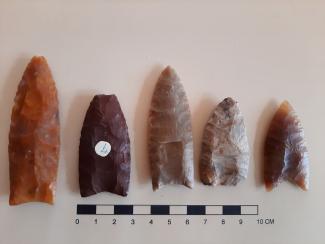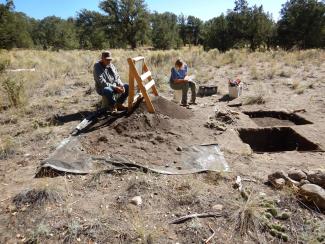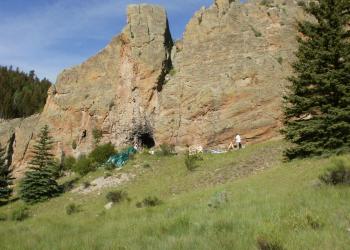Archaeology and Cultural Resources
Archaeology on Public Lands

Archaeological/historical/cultural resources are important because the data obtained through studying and researching these resources helps to tell the story of all of us as human beings. This human story often gets lost or forgotten throughout the centuries and millennia. Archaeology gives us the tools to examine and explain human behavior, understand how societies function, learn from the past and apply those lessons to the present, and study the drivers and implications of a changing world and how different people and cultures interacted with each other and their physical environments over long periods of time. This is accomplished by studying and analyzing the physical/material remains left by past peoples/societies/cultures.
The primary role of archaeologists working for the federal government is to discover, identify, and document significant archaeological and historical sites that may be affected by the projects the federal government conducts and develop a plan to protect them.

The Rio Grande NF conducts numerous projects each year that have the potential to affect archaeological/historical sites such as timber sales, fuels reduction projects, prescribed burns, recreation projects (trails, campgrounds, etc.), engineering projects (roads, bridges, dams, etc.), range improvements (fences, stock tanks, water lines, etc.), as well as a number of other activities. All of these projects must be evaluated by archaeologists.
This role is explicitly defined in several federal laws and regulations such as the National Historic Preservation Act (NHPA), the Archaeological Resources Protection Act (ARPA), the Native American Graves Protection and Repatriation Act (NAGPRA), as well as 36 CFR 800.

The secondary role of archaeologists working for the federal government is to conduct research to further our understanding of the archaeological/historical record, as well as interpret, enhance and/or repair significant archaeological/historical sites. This includes giving presentations, addressing significant research questions, formally interpreting sites with signage, stabilizing/repairing significant sites and providing opportunities for the public to participate in archeological work. Approximately 95% of all of a federal archaeologist’s time is devoted to the primary role leaving very little time to focus on the secondary role.
Please Remember

Context is everything when it comes to archaeology, so please do not move, disturb, collect, or otherwise modify in any way archaeological remains. This includes but is certainly not limited to arrow heads, spear points, pottery sherds, stone tools, glass beads, bones, historic glass bottles and cans, manos/metates, cabin remains, historic structural remains, rock piles, rock rings, etc., etc., etc.
Please take a photo and a GPS point and send it to the Heritage staff on the forest.
You can help us protect and preserve our shared cultural heritage!
That means we would like you to help us keep an eye out for the extraordinary and usual! That includes prehistoric and historic period artifacts, structures, and sites. If you come across, say, an arrowhead or pottery sherd:
- Please do not collect it but take a picture and a GPS location (we call this “catch and release”).
- If the artifact is in harm’s way (i.e. in a trail or a road), please move it to the side in a more protected area, as it probably eroded from somewhere nearby into the trail/road in the first place.
- Notify Price Heiner, Forest Archaeologist/Heritage Program Manager 719.480.1105 or price.heiner@usda.gov

It is important for you to know that both Forest Service Policy and federal law state that it is illegal to remove any artifact 50 years-old or older from public lands (36 CFR 800, Title 18: Theft and Destruction of Government Property, the 1906 Antiquities Act, and the National Historic Preservation Act (NHPA) of 1966). An artifact is defined as “anything that is or was made or used by people”. When in doubt about its age; please leave it where it lies and take a photo! Section 6(d) of the Archaeological Resources Protection Act (ARPA) also aids law enforcement in levying fines, and even imprisonment for the removal or destruction of archaeological materials.
Removing artifacts is stealing and/or erasing knowledge and cultural heritage from posterity and the American public. Please, if you find something, share the data you collect with the archaeologists on the Rio Grande NF. And like our friend Sherdy says: “It may be the missing piece of the puzzle!”
Cultural Resources
Learn more about the history and culture of the area
Protecting Cultural Resources Document
National Historic Preservation Act
Learn from Forest Archaeologists about Cultural Resources
Watch the recorded programs from the Rio Grande National Forest’s Forest Specialist Series Program.



